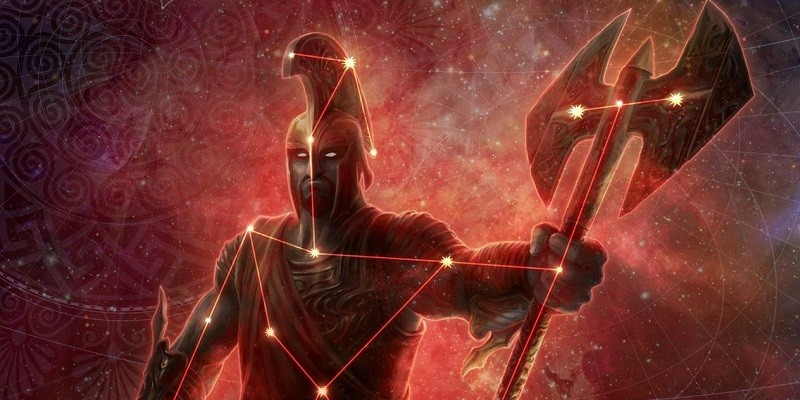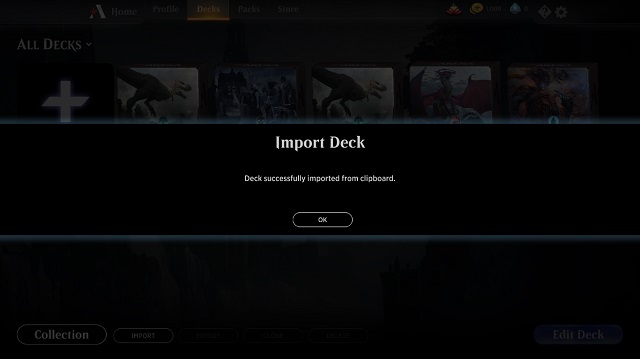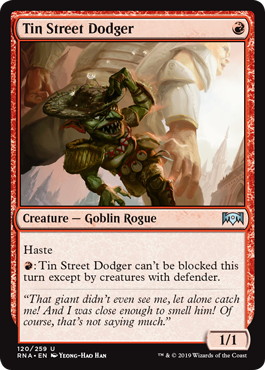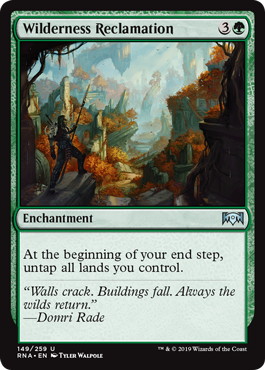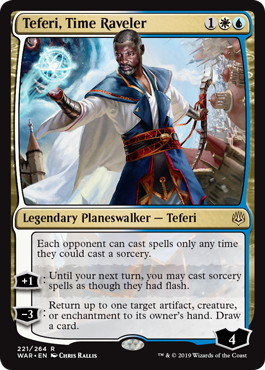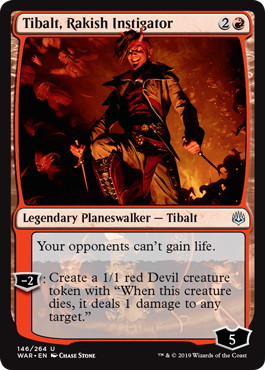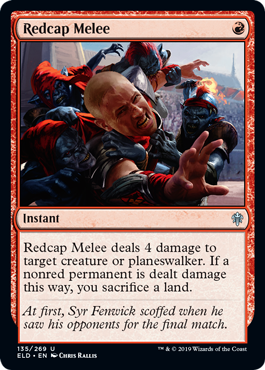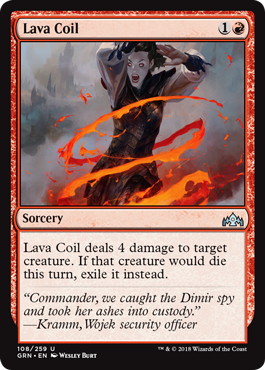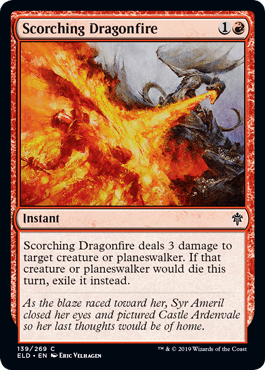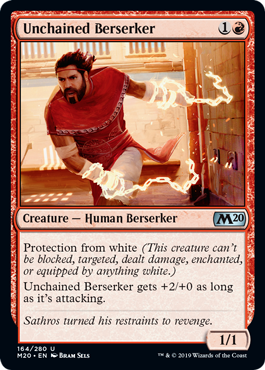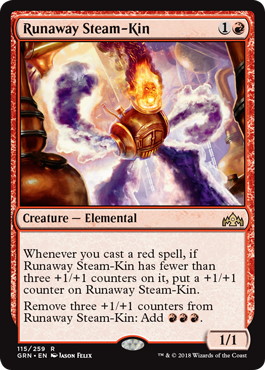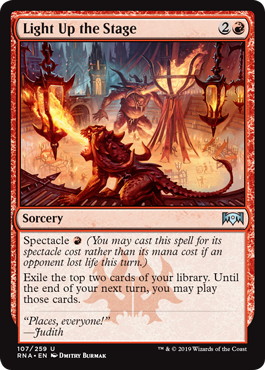Is Red Still Viable?
With Standard Magic Fests coming to MTG Arena for the first time this week, many Red players are looking for the best list to play. Additionally, many are asking whether it’s even a good choice to play in the first place. Today, I will show you two versions I’ve played with that I recommend and answer that question.
Let’s dive right in by taking a look at a couple lists:
Deck #1 by Andrea Mengucci
- Andrea Mengucci
- – Mono Red
- (Standard)
4 《Castle Embereth》
-Land (22)- 4 《Fervent Champion》
4 《Scorch Spitter》
4 《Rimrock Knight》
4 《Robber of the Rich》
4 《Runaway Steam-Kin》
4 《Anax, Hardened in the Forge》
2 《Bonecrusher Giant》
3 《Torbran, Thane of Red Fell》
-Creature (29)-
3 《Unchained Berserker》
3 《Redcap Melee》
3 《Lava Coil》
3 《Scorching Dragonfire》
-Sideboard (15)-
Andrea Mengucci tweeted out this Red list ahead of the last Arena qualifier, reporting that friends on his stream were playing it to success.
Deck #2 by Brandon Burton
Meanwhile, Brandon Burton (sandydogmtg) was succeeding as well with his own version of Red. He climbed up to the #8 spot on the Arena leaderboard, eventually settling down into the mid-30s leading up to the event:
- Brandon Burton
- – Mono Red
- (Standard)
4 《Castle Embereth》
-Land (21)- 4 《Fervent Champion》
4 《Scorch Spitter》
4 《Tin Street Dodger》
4 《Robber of the Rich》
4 《Runaway Steam-Kin》
4 《Anax, Hardened in the Forge》
4 《Bonecrusher Giant》
2 《Torbran, Thane of Red Fell》
-Creature (30)-
3 《Redcap Melee》
2 《Embereth Shieldbreaker》
2 《Claim the Firstborn》
2 《Scorching Dragonfire》
2 《Tibalt, Rakish Instigator》
-Sideboard (15)-
You can find a link to Burton’s Gameplay Vods here: Twitch.tv/sandydogmtg.
You’ll notice their lists aren’t too far off from one another and are trying to do the same thing. Deploy early threats, attack the opponent’s life total down with them, and finish off them off with a timely 《Embercleave》 or 《Torbran, Thane of Red Fell》 just before they think they’ve stabilized. If that doesn’t work, 《Light Up the Stage》 is there to help you re-load and take another shot.
Although both decks share this general strategy for winning the game, there are some key differences in the lists that are worth pointing out:
Key Differences in Those Two Lists
#1: 《Tin Street Dodger》 vs. 《Rimrock Knight》
First, let me start by saying that neither of these creatures are good. They are even worse than 《Scorch Spitter》 (which is also not very good). Their bodies and abilities are very weak. Sadly, they are the best tools available at the moment for Red aggro decks. Their synergy with the rest of the deck makes them just strong enough to play.
The problem with 《Rimrock Knight》 is there aren’t a lot of spots you want to use the Adventure side of it in the early turns. As I mentioned above, you are trying to maximize curving out and you don’t want to stifle your development to chip in two damage. +2/+0 for (R) is not that relevant at the moment (because combat isn’t). Rimrock obviously cannot block, but blocking isn’t all that important for Red (again, combat is not super relevant right now, and if you are blocking you’re likely losing unless it’s a mirror), but it does come up. One notable upside to Rimrock is that it hits harder and is better at wearing an 《Embercleave》 later in the game in terms of damage output (3>1).
The problem with Dodger is that its 1/1 body and ability are both extremely weak. Dodger does enable 《Light Up the Stage》 early on and is cheap, allowing for consistency in terms of getting an early 《Embercleave》 down. It is also a “Rogue”, which allows us to cast something from 《Robber of the Rich》’s ability even after Robber has died. Sometimes, the board can get stalled and Dodger’s ability can become relevant (especially if the Cleave is attached to it). In these spots, you’d rather have the 1/1 with evasion than the 3/1 without it.
The question of which to play is somewhat tied to how many 《Embercleave》s you want to play in your deck. If the answer is 4, I’m more inclined to include Dodgers over Rimrocks. The question is also linked to how quick you want to be. Burton’s version is somewhat faster. Speed comes with better matchups against Jeskai Fires and Azorius Control, but worse matchups against things like the mirror and Rakdos Sacrifice. Right now, I lean slightly towards Dodger, just because I feel like 4 《Embercleave》 is what I want to be doing, and I’d like to have a playset of those to increase my odds of landing it turn 3. That being said, I can’t fault you for playing 《Rimrock Knight》–neither are great.
Note: I’d like to see R&D either print stronger and more relevant early drop creatures in Standard across the color pie or tone down the power level of enchantments and planeswalkers. Making more playable creatures up the curve allows players to properly pressure and interact their opponents and their planeswalkers. Without them, as we see currently, games tend to revolve around a handful of card types that are often too powerful and hard to interact with (think 《Fires of Invention》, 《Wilderness Reclamation》, 《Teferi, Time Raveler》, and 《Nissa, Who Shakes the World》).
Whether having decks and game states focus around a select few cards is desirable or not is subjective, but I personally think it’s a less dynamic way to play Magic. Inflating the strength of creatures to be on par with these permanents will help make games less about drawing one specific card and more about meaningful interaction. Individual cards will inevitably stand out in metagames, and that’s fine, but I don’t think it has to be this extreme. The problem isn’t the number of viable decks, but with the actual gameplay being created by these cards. I think finding ways to balance cards and card types creates better gameplay and ultimately more fun. Making creatures slightly better one way or another seems like a good way to go about this in current Standard, but I’m sure there are other ways as well.
But I digress. Back to the differences in these two decks!
#2: Maindeck Tibalts
The second significant deviation is the two main-deck copies of 《Tibalt, Rakish Instigator》 in the list Mengucci posted. This card has impressed me A LOT the more and more I play with it. It’s particularly useful in a world full of 《Uro, Titan of Nature’s Wrath》, 《Hydroid Krasis》, and 《Enter the God-Eternals》 from Simic and Sultai. It also has applications against a 《Deafening Clarion》 turn from Jeskai Fires or an 《Archon of Sun’s Grace》 trying to gain life on a crucial turn from Azorius Control. It even is relevant against 《Cauldron Familiar》 and 《Witch’s Oven》. Aside from the question of whether to main it, I would not submit a Red list without two in my 75, and would strongly even consider adding the 3rd if Simic and Sultai decks continue to grow in popularity.
#3: The Amount of Sideboard Removal
As you can see, the first lists sideboard features much more removal than Burton’s. The reason for this is likely because the main-deck Tibalts have freed up space, but it also looks to be a nod to decks like Rakdos and the mirror. Burton on the other hand has some spiciness in 《Claim the Firstborn》 (a card that I like against Uro, Hydroid, and Anax potentially stealing wins out of nowhere).
Additionally, I like that Burton is maximizing 《Unchained Berserker》 in his sideboard. It’s a card you want to maximize drawing with the prevalence of Jeskai Fires right now. I don’t like too much removal in the sideboard since Fires and Reclamation seem to be doing so well. All in all, Burton’s sideboard appears to be better for the current metagame as well as more flexible–which is something I value highly in Red decks.
#4: The Number of 《Bonecrusher Giant》s
《Bonecrusher Giant》 is an excellent Magic: The Gathering card, but it’s not great at the moment due to the lack of creatures in Standard that you can point it at. It frequently struggles to find a target, so it has to 《Shock》 the opponent, which is only OK. There are some nice things that it can kill like a 《Brazen Borrower》, 《Edgewall Innkeeper》, or 《Priest of Forgotten Gods》, but it’s a card I’m often boarding out and one that I’m not sure I want four of main. Its ability can be used to turn off something like 《Cerulean Drake》, but it seldomly comes up. The card is weak against Fires, Reclamation, Azorius, and even Sultai, so I like playing 2 at the moment like Mengucci’s list does. I only really want it in the Red mirror match. You’ll look to board it and 《Runaway Steam-Kin》 out quite often.
So now that we’ve examined some of the pros and cons of each list, which do I think is better? While they are both well-built, but for now I recommend going with Burton’s list if Fires and Reclamation continue to perform well and the list Mengucci posted if not.
Positioning and Matchups
But Is Red even a good choice currently? To answer this, it’s helpful to look at the last Standard Premier event (MTG Arena Mythic Invitational Qualifier). Here were the deck archetypes that got 10 wins:
The Result of The MTG Arena Mythic Invitational Qualifier
| Archetype | # of 10 Wins Player |
|---|---|
| Jeskai Fires | 7 |
| Temur Reclamation | 5 |
| Bant Ramp | 2 |
| Sultai Ramp | 2 |
| Mono Red Aggro | 2 |
| Rakdos Sacrifice | 1 |
| Azorius Control | 1 |
These results are both good and bad for Red. Bad in the sense that Red is unfavored against Fires but good because it’s favored against Reclamation. Here is how I feel about Red’s matchups in general:
Matchups
| Archetype | Matchup |
|---|---|
| Jeskai Fires | Unfavored |
| Temur Reclamation | Favored |
| Azorius Control | Even |
| Rakdos Sacrifice | Slightly Unfavored |
| Sultai Ramp | Favored |
| Bant Ramp | Favored |
| Temur Clover | Unfavored |
Because these matchups vary, I don’t believe Red to be a deck one can feel confident submitting week to week like Fires, Reclamation, or Sultai. However, it is still a good deck to have in your repertoire to be able to play should a good opportunity present itself. Right now, I think Red is merely a metagame dependent call and should be treated as such. It’s still a strong deck with a good, proactive-strategy, that can and will get wins–but you must proceed cautiously and submit it only when the time is right. Do so if Temur Reclamation, Sultai, and Bant start growing in popularity or if you notice people skimping on their hate cards and you will be rewarded accordingly. Otherwise, I advise steering clear of it.
Short Guidance of Sideboarding
I won’t dive into a full sideboard guide today, as I’ve presented you with two different versions of the deck, but I will leave you with a list of the most common cards I board out and trim from the deck:
The Most Common Cards to Board Out
The Most Common Cards to Trim
Conclusion
Hopefully this is helpful.
As always, good luck battling and thanks for reading!!


